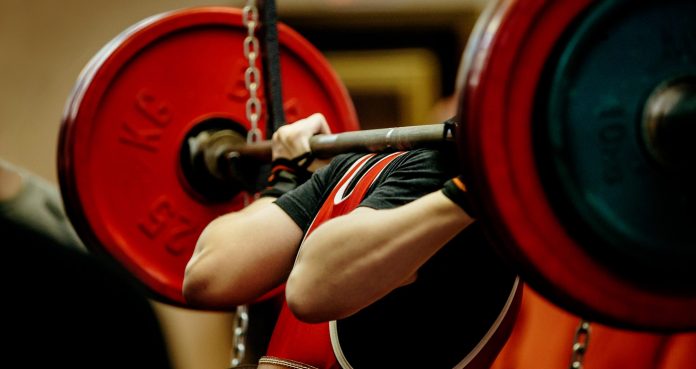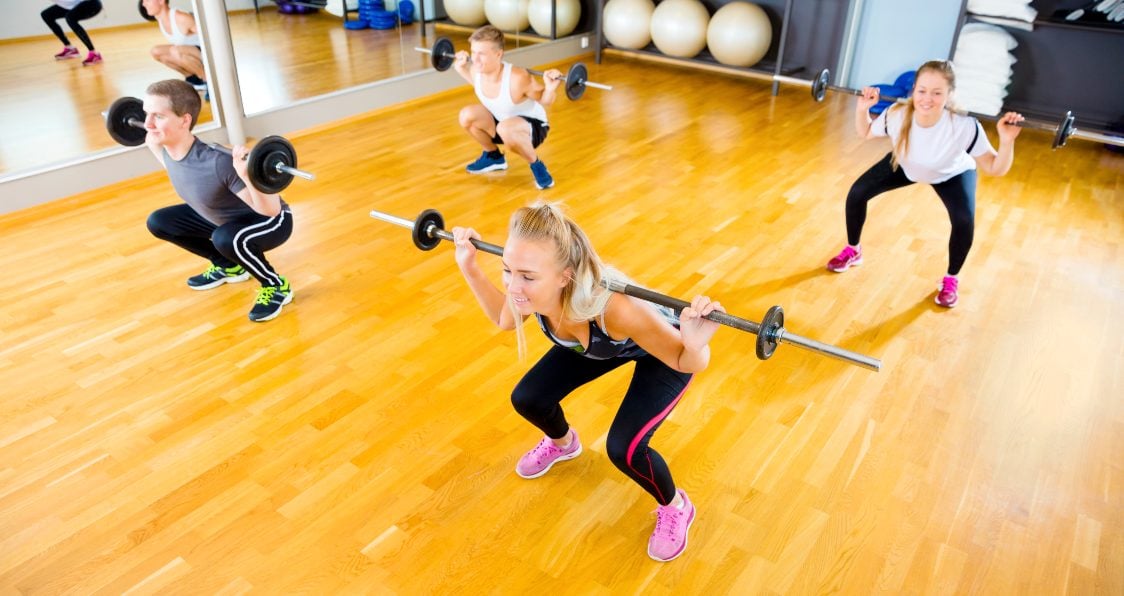
These two squatting techniques are used by athletes for gains, but each provides different movement mechanics and the transfer of forces to get work done.
Squats are an exercise that anyone of all levels can enjoy from beginners, to those more intermediate, all the up to more experienced lifters. As a great lower body exercise, squats are perfect for seeing serious growth in your legs while also benefiting explosive power and that added level of dynamic movement to aid in any workout, training session, or competitive performance. With many variations of squats and a host of equipment to use, back squats are especially great for enhancing those gains.
The importance of good technique is something to take note of in order to both maximize strength and size while also preventing any unwanted injury that may put you out of your training cycle. Knowing the difference between a high bar squat and low bar squat is something to really take note of because while they will both help with squatting form for optimal growth, they differ in their respective movement mechanics and the transfer of forces done during the exercise.
As a slight side note, when it comes to squatting, balance and stability are more than important, especially considering the amount of weight put on your back. Being able to maintain a good, solid posture will allow you to push yourself to new heights and really enhance all aspects of your lift. By combining flexibility with stability, also referred to as strength, you really get the chance to increase overall mobility and work to enhance your range of motion (1). The benefits of squats is that you are actively working on this while also promoting it for your overall physical health.
The differences in the high bar versus low bar squat lie in the foot placement, hips, chest angle, and hand placement and vary slightly to target different muscles and movements. Let’s dive into these differences and see which squat is most effective when it comes to your training and performance.

What Is A High Bar Squat?
The high bar squat is where the bar is placed high on your upper back, typically on the trapezius muscle that goes across the top of the shoulders. Your hands are placed wider towards the plates and your feet are around shoulder width apart. Since the bar is placed higher on your back, it is important to stay over the midfoot as much as possible and your back may be slightly straighter than with a low bar squat.
Benefits Of A High Bar Squat
This is seen as the traditional way of squatting and puts you more in that conventional athletic stance. A high bar squat will really work your quads and you will start to see great growth and strength adding more explosive power and a more solid stance when it comes to other activity (2). Placing less stress on your back allows for more balance and your ankles will develop more mobility in order to keep you upright, especially since your upper body is more straight than a low bar squat.

What About A Low Bar Squat?
A low bar squat is where the bar is placed on the upper back as well, but lower than the high bar squat. This would typically rest on your posterior deltoid as opposed to the top of your shoulders. Your hands will be slightly closer together and your feet shoulder width apart, although they will splay out slightly as opposed to keeping your toes directly in front of you. With the bar slightly lower on your back, you will have a slightly more forward lean to maintain a more solid form.
Benefits Of A Lower Bar Squat
Low bar squats are used for a couple of reasons, but the main ones being moving more weight and increasing the load on your back to really see solid development. Since your hips are forced to move back, you can load more on your back and will be able to absorb and produce better force (3). It is slightly easier to lift more weight and is great for developing strength. This style of squatting can really develop the glutes, hamstrings, and back extensors since they require more activation than the quads.

Which Placement Is More Effective?
Each of these squatting placements have their respective benefits and it all comes down to your performance goals and what you are looking to achieve from each. If you seek strength, maybe look more towards the low bar squat since you can add more weight onto that bar and really feel the effects of an increased load. For hamstring, glute, and back growth, a low bar squat may be just what you need to increase that one rep max or just build up sheer strength.
The high bar squat will translate over nicely into other power exercises and can really work on that quad growth. Knowing just what to do when it comes to supporting lower body building is great and the high bar squat will see a more traditional squat to aid in your athletic stance regardless of your respective sport. It is ultimately up to you, your goals, and your comfort level when it comes to squatting. With so much of the weight on your back, without the proper strength and form, that load can lead to unwanted pain and injury. Knowing your limits is key but being able to push those limits is equally as important.
Wrap Up
Squatting is an essential exercise for lifters and athletes of all kind to not only see growth, but also aid in functional movements that can really increase our work capacity. The high bar squat versus the low bar squat are two placements that may differ in movement and a transfer of force but can also be more than beneficial when it comes to lower body gains. Decide on what your goals are and really work to see a huge change in strength and power with these two squatting techniques.
Let us know what you think in the comments below. Also, be sure to follow Generation Iron on Facebook, Twitter, and Instagram.
*Images courtesy of Envato
References
- Haley, Jimmy. “The Importance of Flexibility and Mobility”. (source)
- Glassbrook, Daniel J.; Brown, Scott R.; Helms, Eric R.; Duncan, Scott; Storey, Adam G. (2019). “The High-Bar and Low-Bar Back-Squats: A Biomechanical Analysis”. (source)
- Murawa, Michal; Fryzowicz, Anna; Kabacinski, Jaroslaw; Jurga, Jakub; Gorwa, Joanna; Galli, Manuela; Zago, Matteo (2020). “Muscle activation varies between high-bar and low-bar back squat”. (source)
